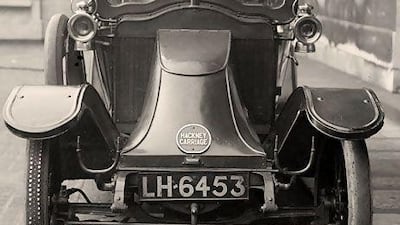London black cabs descend directly from the hackney carriage, a description still applied today three-and a half centuries after licences were first issued to owners of the horse-drawn pioneers.
The name was long thought to derive from the French haquené, a medium-sized horse considered suitable for women but the likelier explanation is a link with the area in East London, previously a village, called Hackney.
Regulation began a few years earlier, in 1654, when the British parliament resolved to deal with the "many inconveniences" caused by the irregular operation of carriages offered by men known as Hackney coachmen.
In other countries or elsewhere in Britain, local versions of the hackney carriage were developed, including the two-wheeler "noddy" pulled by a single horse in Ireland and Scotland and the fiacre, a small horse-drawn coach named after an Irish saint, in France. Fiacre is regarded as the patron saint of taxi drivers.
The use of the word "hackney" was not confined to London; the taxi regulatory section of the police force in the city of Boston, in the United States, is known as the hackney carriage unit. Taxi drivers in New York, Chicago and elsewhere have been called "hacks", their designated ranks "hackstands".
Evolution from the original carriage was slow.
But few present day taxi passengers, in an age when motor manufacturers are exploring the potential of electric cars, will know that cabbies got there first. Electric hackney carriages appeared on the streets before the first use of vehicles using the internal combustion engine around the turn of the 19th Century.
As petrol-driven cars replaced electrically powered taxis, horse-drawn carriages finally died out in London soon after the end of the Second World War.
Under British regulations, only those vehicles designated hackney carriage can legally tour the streets waiting to be hailed by passengers. Private hire vehicles, also known as minicabs, are theoretically meant to pick up only customers who have made bookings.
Travellers, especially unaccompanied women, are advised to avoid unlicensed cabs whose drivers ply for trade in busy city centre areas.
In London, black cab drivers must pass a test known as "the knowledge" to show a strong working grasp of the geography of the capital. They are reputedly slow to retire; several men are still driving London taxis well into their 80s.
Private users who have obtained black cabs for their own use, either to enhance privacy or because the vehicles are regarded as sturdy, include Queen Elizabeth II's husband, Prince Philip, and the actor, writer and the broadcaster Stephen Fry. London-style taxis can also be found in many other countries, in social and business use.


